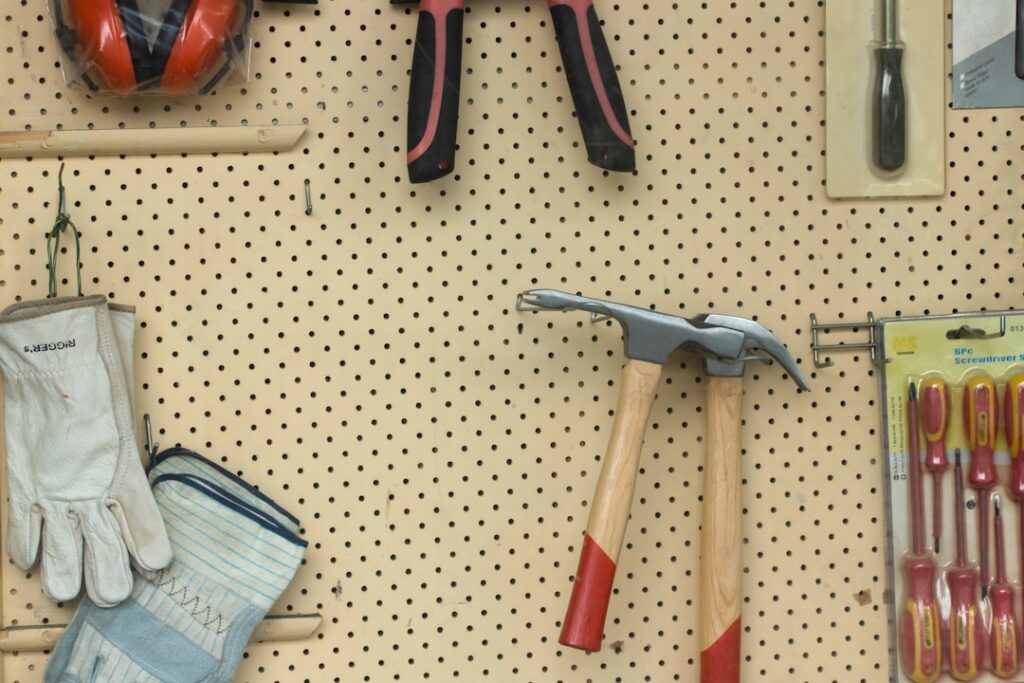
Angles are a fundamental concept in mathematics and geometry. An angle is formed when two rays or lines meet at a common endpoint, known as the vertex. The measurement of an angle is typically expressed in degrees, with a full circle measuring 360 degrees. Angles can be classified based on their measurement, with acute angles measuring less than 90 degrees, right angles measuring exactly 90 degrees, obtuse angles measuring more than 90 degrees but less than 180 degrees, and straight angles measuring exactly 180 degrees.
Understanding the basics of angles is crucial in various fields, as it provides a foundation for spatial reasoning and measurement. Angles are used to describe the orientation and direction of objects, as well as the relationships between different elements in a given space. In addition to their mathematical significance, angles also play a crucial role in fields such as construction, engineering, design, photography, and more.
Key Takeaways
- Angles are formed by two rays with a common endpoint and are measured in degrees.
- Angles play a crucial role in fields such as mathematics, physics, engineering, and design.
- An angle finder is a tool that helps in measuring and transferring angles with precision and accuracy.
- Angle finders can be used in various applications such as woodworking, metalworking, and construction.
- In construction and carpentry, understanding and utilizing angles is essential for creating strong and stable structures.
The Importance of Angles in Various Fields
Angles play a critical role in a wide range of fields, including mathematics, science, engineering, architecture, and design. In mathematics, angles are used to measure the rotation or orientation of geometric shapes, as well as to calculate distances and areas. In science, angles are used to describe the direction and magnitude of forces, as well as the trajectory of objects in motion.
In engineering and architecture, angles are essential for designing and constructing structures with precision and stability. The proper measurement and alignment of angles are crucial for ensuring the structural integrity and safety of buildings, bridges, and other infrastructure. In design, angles are used to create visually appealing compositions and layouts, as well as to convey depth and perspective in two-dimensional and three-dimensional spaces.
Furthermore, angles are also important in fields such as photography and videography, where they are used to frame and capture images and footage from different perspectives. Understanding the principles of angles is essential for achieving visually compelling compositions and conveying a sense of depth and dimension in visual media.
The Role of an Angle Finder in Precision and Accuracy
An angle finder is a specialized tool used to measure and determine the angle between two intersecting lines or surfaces. It is designed to provide precise and accurate angle measurements, making it an essential instrument in various applications that require precision and alignment. Angle finders come in different forms, including digital protractors, bevel gauges, and inclinometers, each with its own unique features and capabilities.
The role of an angle finder in precision and accuracy cannot be overstated, particularly in fields such as construction, carpentry, metalworking, and machining. In construction and carpentry, angle finders are used to ensure the proper alignment and fitting of structural components, such as beams, joists, and rafters. They are also used to determine the correct angles for cutting and joining materials, such as wood, metal, and plastic.
In metalworking and machining, angle finders are used to set up and align workpieces for drilling, milling, cutting, and welding operations. They are also used to verify the accuracy of machined surfaces and components, ensuring that they meet the required specifications and tolerances. In addition to their applications in traditional trades, angle finders are also used in modern manufacturing processes, such as 3D printing and additive manufacturing, where precise angle measurements are essential for producing complex geometries with high dimensional accuracy.
How to Use an Angle Finder for Different Applications
Using an angle finder for different applications requires a systematic approach and an understanding of the specific requirements of each task. In construction and carpentry, angle finders are used to measure and transfer angles for cutting and assembling structural components. To use an angle finder for this purpose, one must first place the tool against the surfaces or edges where the angle needs to be measured. The tool is then adjusted until it aligns with the intersecting lines or surfaces, providing an accurate reading of the angle.
In metalworking and machining, angle finders are used to set up workpieces for drilling, milling, cutting, and welding operations. To use an angle finder for this purpose, one must first secure the workpiece in a vise or fixture and then position the tool against the surfaces or edges where the angle needs to be measured. The tool is then adjusted until it aligns with the desired angle, providing a reference for setting up the machining equipment or verifying the accuracy of the machined surfaces.
In addition to traditional applications, angle finders are also used in modern manufacturing processes such as 3D printing and additive manufacturing. In these processes, angle finders are used to verify the orientation and alignment of printed or deposited layers, ensuring that they conform to the specified geometries and tolerances. By using an angle finder in these applications, manufacturers can achieve high dimensional accuracy and consistency in their printed or fabricated parts.
Unlocking the Power of Angles in Construction and Carpentry
In construction and carpentry, angles play a crucial role in ensuring the structural integrity and stability of buildings, bridges, and other infrastructure. Properly measuring and transferring angles is essential for cutting and assembling structural components with precision and accuracy. Angle finders are indispensable tools in these trades, allowing workers to determine the correct angles for cutting and joining materials such as wood, metal, and plastic.
Angles are used to determine the pitch of roofs, the slope of stairs, the miter cuts for moldings and trim pieces, and the bevel cuts for joining structural members. By using angle finders to measure and transfer these angles, construction workers and carpenters can ensure that their work meets the required specifications and tolerances. This not only enhances the structural integrity of the finished product but also contributes to its aesthetic appeal and functionality.
Furthermore, angles are also important in layout and design tasks in construction and carpentry. By understanding the principles of angles, workers can create visually appealing compositions and layouts that maximize space utilization and enhance the overall design of a structure. Whether it’s determining the placement of windows and doors or creating intricate patterns with moldings and trim pieces, angles play a critical role in shaping the visual appeal and functionality of architectural elements.
The Impact of Angles in Photography and Videography

In photography and videography, angles are essential for framing shots, capturing perspectives, and conveying depth and dimension in visual media. Understanding the principles of angles allows photographers and videographers to create visually compelling compositions that engage viewers and convey a sense of space and scale. By carefully considering the angles from which images or footage are captured, visual storytellers can evoke emotions, guide attention, and communicate narratives effectively.
Angles are used to create dynamic compositions that draw viewers into the scene and provide a sense of immersion. Whether it’s capturing a sweeping landscape from a high vantage point or framing a close-up portrait from a low angle, the choice of angles can significantly impact the visual impact of an image or video. By experimenting with different angles and perspectives, photographers and videographers can create unique visual experiences that resonate with their audience.
Furthermore, angles also play a crucial role in conveying depth and dimension in visual media. By using techniques such as leading lines, perspective distortion, and foreshortening, visual storytellers can create a sense of depth that enhances the realism and impact of their images or footage. Understanding how angles affect spatial relationships allows photographers and videographers to create visually engaging content that captivates viewers’ attention and leaves a lasting impression.
Maximizing the Potential of Angles in Engineering and Design
In engineering and design fields such as mechanical engineering, civil engineering, product design, and industrial design, angles are essential for creating functional products and structures with precise geometries. Understanding how angles affect the behavior of mechanical systems, the stability of structures, and the functionality of products is crucial for achieving optimal performance and reliability.
Angles are used to determine the orientation of mechanical components such as gears, linkages, shafts, and bearings in mechanical engineering applications. By understanding how angles affect the motion and interaction of these components, mechanical engineers can design systems that operate smoothly and efficiently. Angles also play a crucial role in determining the strength and stability of structures such as bridges, buildings, and industrial facilities in civil engineering applications. By analyzing how angles affect the distribution of forces within these structures, civil engineers can ensure that they meet safety standards and regulatory requirements.
In product design and industrial design fields, angles are used to create ergonomic products that provide comfort and usability for users. By understanding how angles affect human posture and movement, designers can create products that fit naturally into users’ daily lives. Whether it’s designing furniture that promotes good posture or creating handheld tools that reduce strain on users’ hands and wrists, angles play a critical role in shaping the functionality and user experience of products.
In conclusion, angles are fundamental concepts that have far-reaching implications across various fields such as mathematics, science, engineering, architecture, design, photography, videography among others. Understanding the basics of angles is crucial for spatial reasoning while using an angle finder is essential for precision measurements across different applications such as construction carpentry metalworking machining 3D printing additive manufacturing among others. Angles play a crucial role in ensuring structural integrity stability aesthetic appeal functionality across various applications such as construction carpentry photography videography engineering design among others.
Looking for the perfect angle finder tool? Check out The King Grastone’s article on the best angle finders for woodworking and construction projects. Their comprehensive guide provides valuable insights and recommendations to help you choose the right angle finder for your needs. Whether you’re a DIY enthusiast or a professional tradesperson, this article will help you make an informed decision. The King Grastone is your go-to resource for all things related to tools and equipment, so be sure to explore their website for more expert advice.
FAQs
What is an angle finder?
An angle finder is a tool used to measure and transfer angles. It is commonly used in carpentry, metalworking, and other trades where precise angle measurements are required.
How does an angle finder work?
An angle finder typically consists of a protractor-like device with a pivoting arm or digital display. It is used to measure the angle between two intersecting lines or surfaces by aligning the tool with the lines and reading the measurement.
What are the different types of angle finders?
There are several types of angle finders, including traditional protractor-style angle finders, digital angle finders with LCD displays, and magnetic angle finders that can attach to metal surfaces.
What are the applications of an angle finder?
Angle finders are commonly used in carpentry for cutting and installing trim, in metalworking for fabricating and welding, and in various other trades for tasks that require precise angle measurements.
How accurate are angle finders?
The accuracy of an angle finder can vary depending on the type and quality of the tool. Digital angle finders tend to offer higher accuracy compared to traditional protractor-style angle finders.
Can angle finders measure both inside and outside angles?
Yes, most angle finders are capable of measuring both inside and outside angles by adjusting the tool to fit the specific angle being measured.


